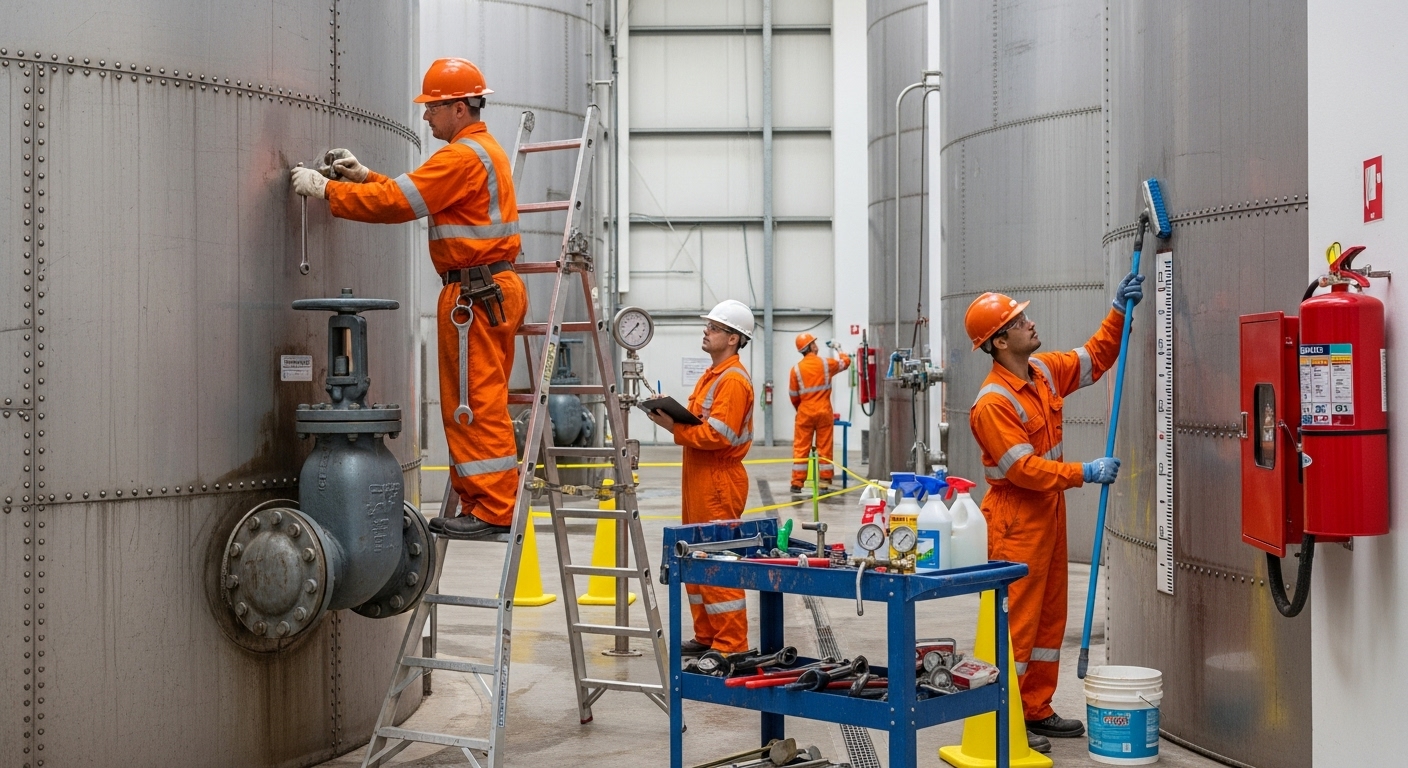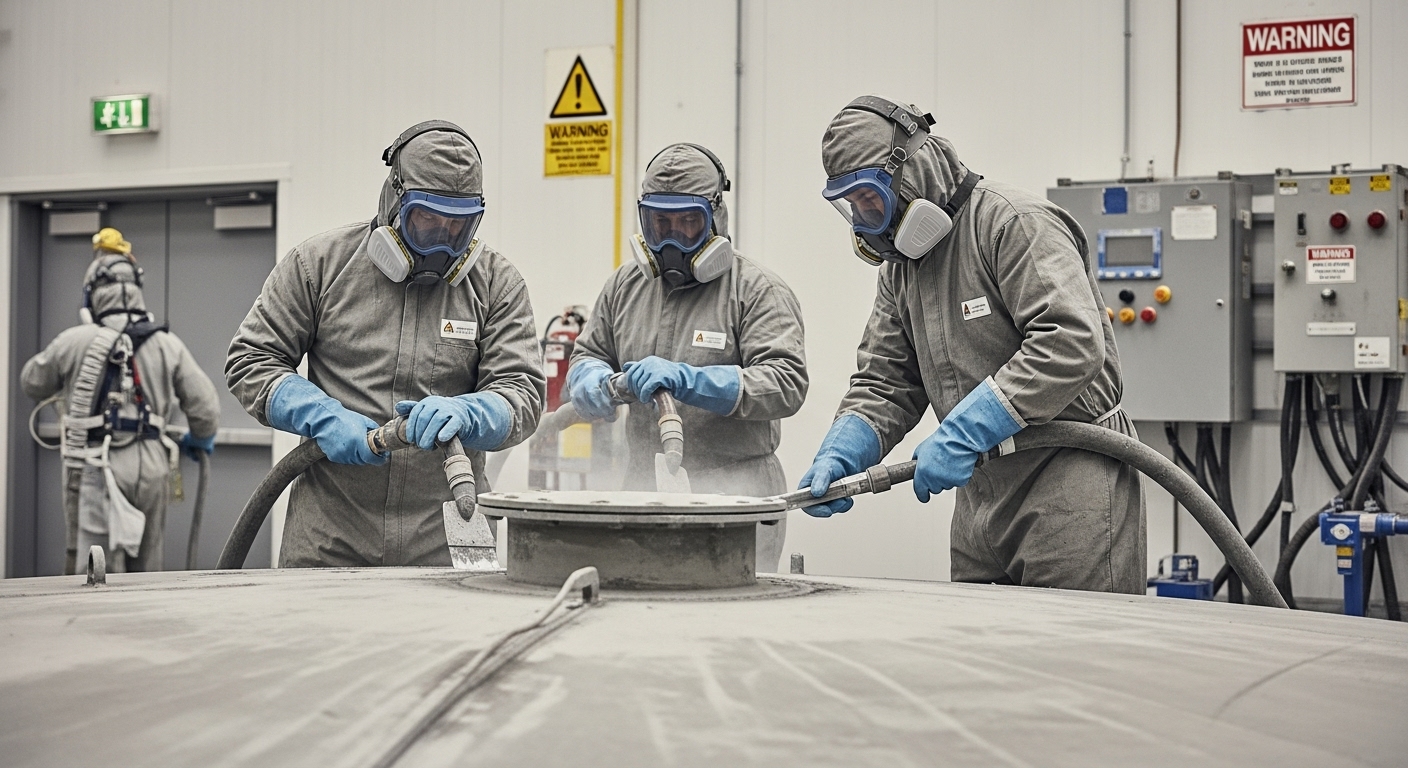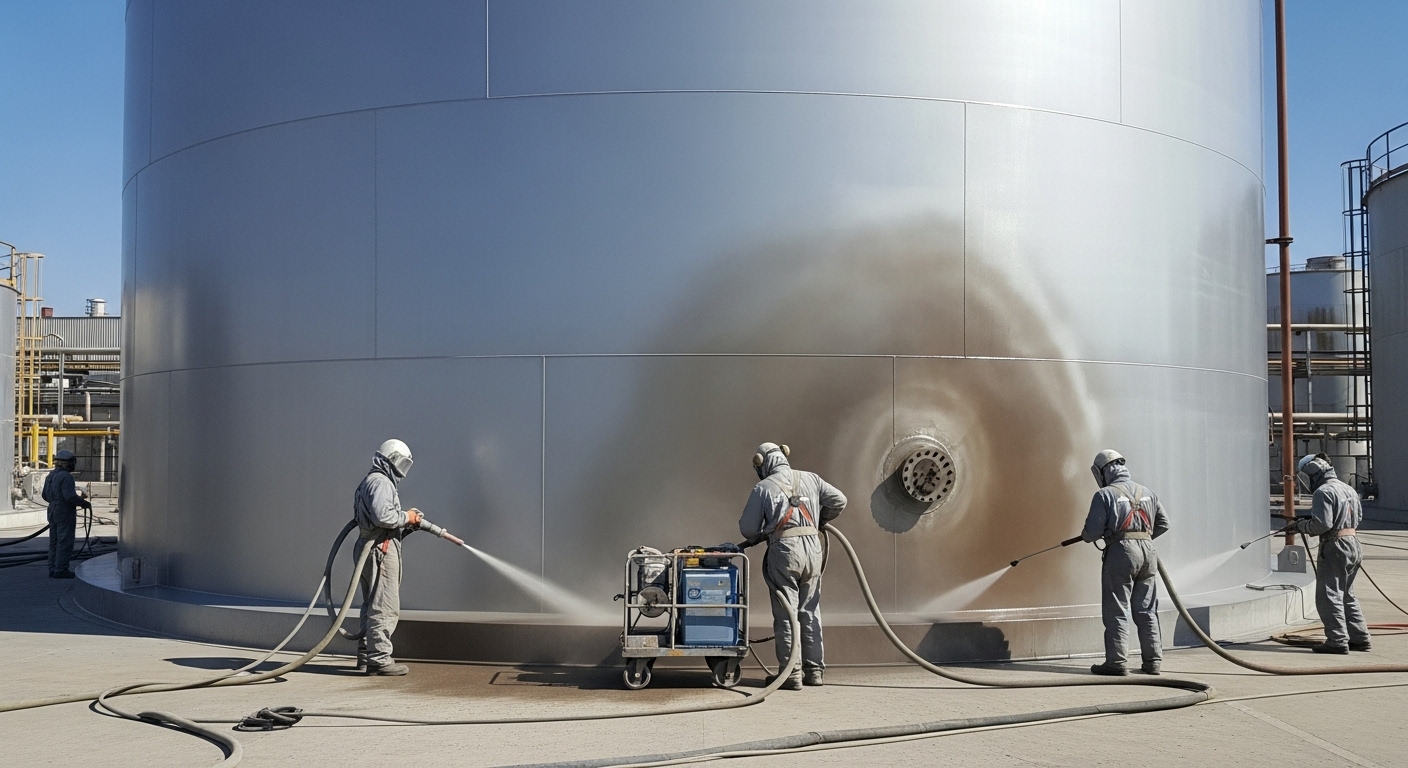A water tank isn’t just a piece of infrastructure—it’s a lifeline. Communities, industries, and entire facilities depend on these tanks every single day to deliver safe, clean water. But here’s the reality: even the strongest steel tank or tower won’t last forever without proper care.
That’s where a water tank maintenance schedule comes into play. It’s not about fixing problems once they appear; it’s about preventing them before they threaten water safety or create massive repair bills.
Think of it like health checkups. Skipping them may not seem like a big deal at first, but over time, the risks grow. Tanks need the same kind of preventive attention. From inspection frequencies to coating maintenance timing, every detail matters.
In this guide, we’ll break down how to build an effective schedule, why timing is critical, and how it ultimately saves money, safeguards communities, and extends the life of your water storage system.
Why A Water Tank Maintenance Schedule Is the Backbone of Reliable Water Storage
When it comes to infrastructure, failure isn’t an option. A carefully crafted water tank maintenance schedule ensures that tanks operate reliably, safely, and efficiently. Without a clear plan, corrosion, leaks, and contamination sneak up, leading to service disruptions and costly emergency repairs.
This schedule creates predictability. Instead of scrambling when problems arise, operators can anticipate issues with set maintenance intervals and address them early. From lifecycle maintenance planning to documenting completed work, everything falls into place.
The benefit? Tanks last longer, operations remain smooth, and communities stay confident in their water supply.
Setting The Right Tank Maintenance Frequency for Long-Term Protection
Not all tanks require the same treatment, which is why tank maintenance frequency must be tailored to each system. Factors like climate, water chemistry, tank material, and age determine how often inspections and repairs should take place.
For example, a steel water tower in a humid environment may demand shorter maintenance intervals due to accelerated corrosion, while a newer tank in a dry region may have more flexibility. Setting this frequency also ties into inspection frequencies, where visual checks and internal assessments reveal early warning signs.
When frequency is ignored, small issues—like a tiny crack in the coating—can grow into full-blown structural concerns. A proactive frequency plan saves money and eliminates unnecessary risks, making it the cornerstone of reliable tank care.
The Role of Maintenance Planning in Avoiding Costly Downtime
Every successful maintenance program relies on detailed maintenance planning. This isn’t just scheduling random checkups; it’s a structured approach that aligns inspections, cleaning, repairs, and recoating with the tank’s lifecycle needs.
Planning also involves resource coordination: ensuring skilled crews, proper tools, and safety gear are ready when needed. Skipping planning often leads to rushed jobs or downtime, which can compromise both safety and water availability.
One crucial aspect of planning is replacement planning—knowing when components like valves, ladders, or coatings are nearing the end of their lifecycle. Instead of waiting for failure, replacements are integrated into the plan. Ultimately, this keeps tanks operational, avoids emergency costs, and guarantees consistent performance for decades.
Building A Preventive Maintenance Timeline for Tanks of Every Size
A preventive maintenance timeline lays out exactly what should happen and when. This timeline may include quarterly cleanings, annual inspections, and major overhauls every five to ten years depending on tank type and condition.
The timeline also accounts for condition-based maintenance, where actions are triggered by actual tank conditions rather than arbitrary dates. For example, after a coating inspection, teams may decide to reapply protective layers earlier than planned if wear is detected.
The advantage of this timeline is clarity—it keeps both operators and stakeholders on the same page. And by incorporating coating maintenance timing, the tank stays protected against rust and contamination while extending coating lifecycles.
Coordinating A Water Tower Service Schedule with Predictive Strategies
Large water towers require a dedicated water tower service schedule because of their unique scale and complexity. These structures are more exposed to environmental wear, making predictive maintenance strategies especially valuable.
Predictive strategies use data—such as corrosion monitoring, vibration sensors, or water chemistry results—to anticipate problems before they happen. This allows service schedules to be adjusted in real time, ensuring no resources are wasted and no issue is overlooked.
Combined with routine tasks like cleaning and repainting, predictive methods create a robust, adaptive schedule. This is where modern technology meets traditional maintenance practices, resulting in stronger infrastructure and long-term savings.
Key Anchor Points Integrated in Maintenance Programs
To create a well-rounded water tank maintenance schedule, certain anchor points must be integrated naturally:
- Regular inspection frequencies identify early damage before it spreads.
- Careful coating maintenance timing preserves protective layers, preventing rust and contamination.
- Smart replacement planning avoids costly breakdowns and emergency shutdowns.
These elements ensure that preventive strategies don’t just exist on paper—they translate into actionable, measurable results for every facility.
Why a proactive schedule pays off in the long run?
Here’s the bottom line: investing in a structured schedule saves more money than it costs. Reactive maintenance often leads to expensive repairs, water service interruptions, or even full tank replacements. Proactive care, on the other hand, builds in predictive maintenance strategies, cuts repair costs, and extends tank life by decades.
This approach also boosts trust. Communities know their water supply is safe and reliable, while facility managers gain confidence in budget predictability. By treating maintenance as a long-term investment, rather than a short-term fix, tank owners set themselves up for efficiency, safety, and cost savings.
How to create your custom maintenance schedule for lasting results?
Water tanks aren’t just assets—they’re guardians of public health and safety. A consistent water tank maintenance schedule ensures these structures remain reliable, efficient, and safe for generations. By combining inspection frequencies, coating maintenance timing, and replacement planning, tanks are shielded against corrosion, contamination, and costly failures.
This is about more than just ticking off tasks on a calendar—it’s about building resilience into the very systems that keep communities running. Proactive scheduling reduces risks, lowers expenses, and extends the service life of critical infrastructure.
If you’re responsible for a tank or tower, the time to act is now. Don’t wait for problems to surface. Instead, take control with a proactive, well-structured schedule that ensures reliability every day. Create Your Custom Maintenance Schedule today and safeguard the future of your water storage system.







